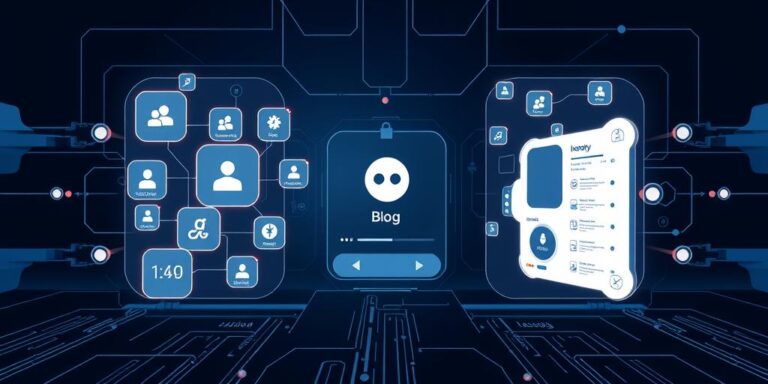AI-Driven Personalization of Gadget Interfaces (2025)
In 2025, gadget interfaces are no longer static entities but dynamic, personalized experiences shaped by artificial intelligence. This post explores how AI is revolutionizing the way we interact with our devices, making technology more intuitive and user-friendly.
The Rise of Adaptive Interfaces
Traditional user interfaces follow a one-size-fits-all approach, presenting the same layout and options to every user. AI-driven personalization changes this paradigm by creating adaptive interfaces that evolve based on individual usage patterns, preferences, and even emotional states.
Key Benefits:
- Enhanced User Experience: AI tailors interfaces to match user needs, reducing cognitive load and improving satisfaction.
- Increased Efficiency: By prioritizing frequently used functions and streamlining workflows, AI enhances user productivity.
- Accessibility: Personalized interfaces can be customized to accommodate users with disabilities, promoting inclusivity.
- Contextual Awareness: AI algorithms analyze environmental data, such as location and time of day, to optimize interface elements accordingly.
How AI Powers Personalization
Several AI techniques contribute to the personalization of gadget interfaces:
- Machine Learning (ML): ML algorithms analyze user interactions to identify patterns and predict future behavior. For example, an ML model can learn which apps a user frequently accesses in the morning and automatically prioritize them on the home screen.
- Natural Language Processing (NLP): NLP enables devices to understand and respond to voice commands and natural language input. This allows users to control their gadgets using spoken instructions, making interactions more intuitive.
- Computer Vision: Computer vision algorithms analyze facial expressions and body language to infer user emotions and adjust interface elements accordingly. For instance, a device might reduce screen brightness if it detects that the user is feeling stressed.
- Reinforcement Learning (RL): RL algorithms allow interfaces to learn through trial and error, continuously optimizing themselves based on user feedback. This iterative process ensures that interfaces remain aligned with evolving user needs.
Examples of AI-Driven Personalization
- Smart Home Devices: AI-powered thermostats learn user temperature preferences and automatically adjust settings based on occupancy and weather conditions.
- Wearable Technology: Smartwatches monitor user activity levels and provide personalized fitness recommendations based on individual goals and progress.
- Mobile Phones: AI algorithms curate news feeds, prioritize notifications, and recommend apps based on user interests and usage patterns.
- Automotive Interfaces: AI-driven infotainment systems learn driver preferences and adjust settings such as seat position, mirror angles, and climate control accordingly.
Challenges and Considerations
While AI-driven personalization offers numerous benefits, it also presents several challenges:
- Data Privacy: Collecting and analyzing user data raises privacy concerns. Developers must implement robust security measures to protect sensitive information and comply with data protection regulations.
- Algorithmic Bias: AI algorithms can perpetuate existing biases if they are trained on biased data. Developers must ensure that their models are fair and unbiased to avoid discriminatory outcomes.
- User Control: Users should have control over the level of personalization they receive. Providing options to customize settings and opt-out of data collection is essential.
- Transparency: It is important for users to understand how AI algorithms are personalizing their experiences. Providing clear explanations of how data is being used can build trust and confidence.
The Future of Gadget Interfaces
AI-driven personalization is poised to transform the way we interact with technology. As AI algorithms become more sophisticated and data collection becomes more seamless, gadget interfaces will become increasingly intuitive, adaptive, and user-centric. By addressing the challenges and considerations outlined above, we can ensure that AI-driven personalization enhances user experiences while respecting individual privacy and autonomy.
In the future, expect to see:
- Emotionally Intelligent Interfaces: Gadgets that respond to your mood.
- Predictive Customization: Interfaces that anticipate your needs before you even realize them.
- Seamless Integration: A unified experience across all your devices, personalized to you.
AI is not just making gadgets smarter; it’s making them more human.




